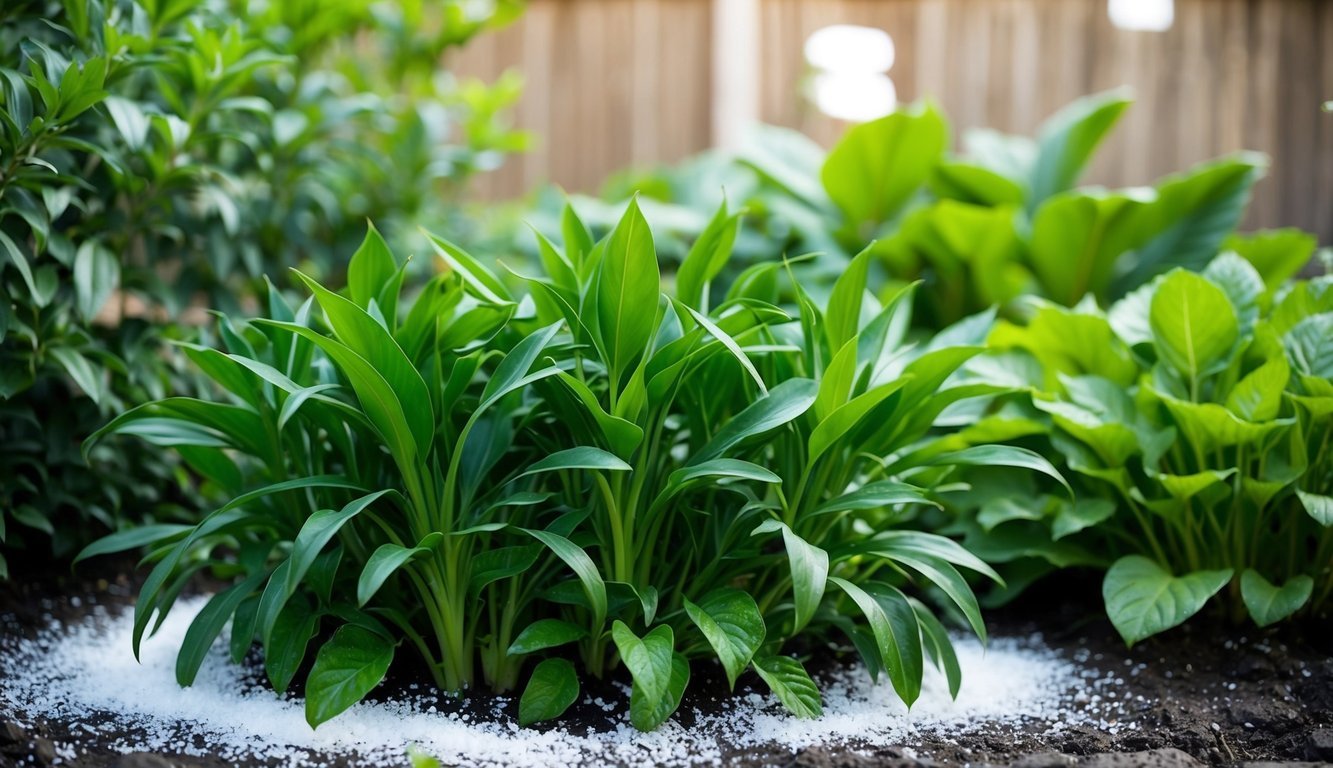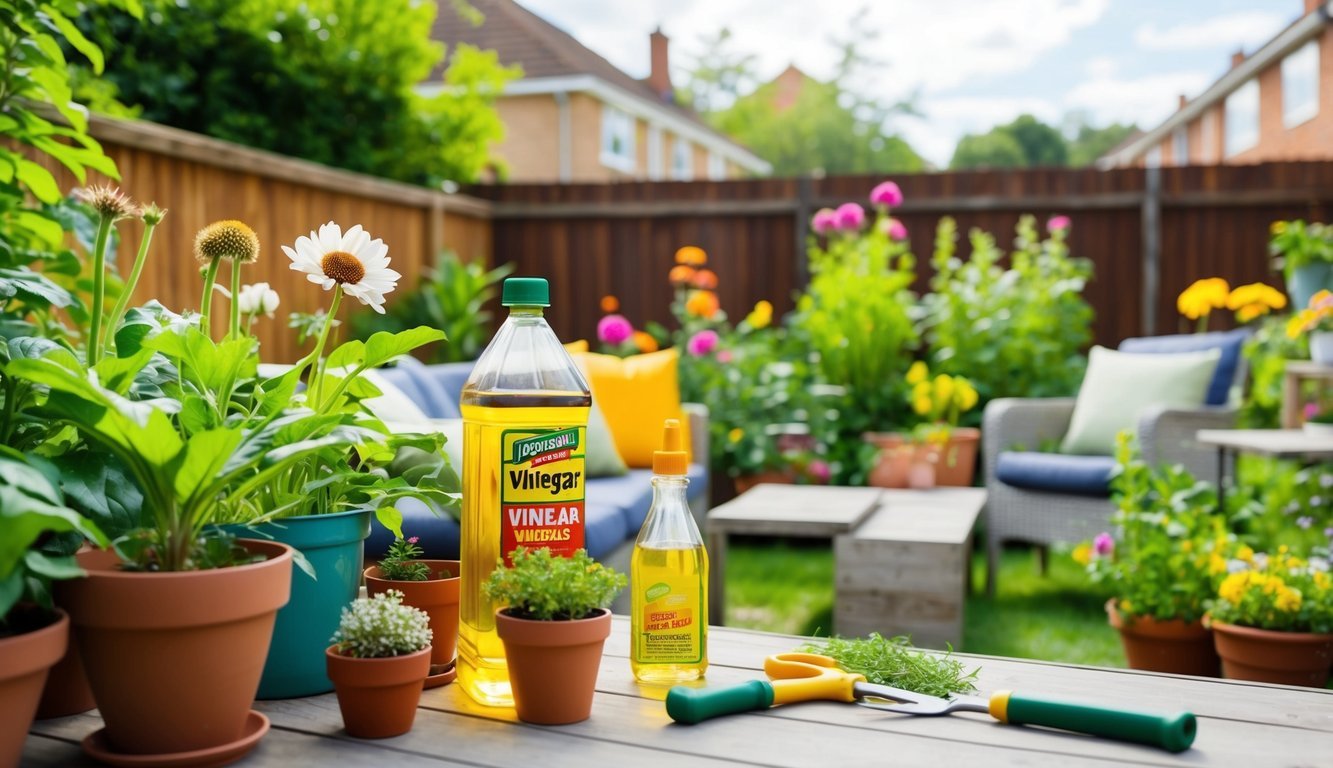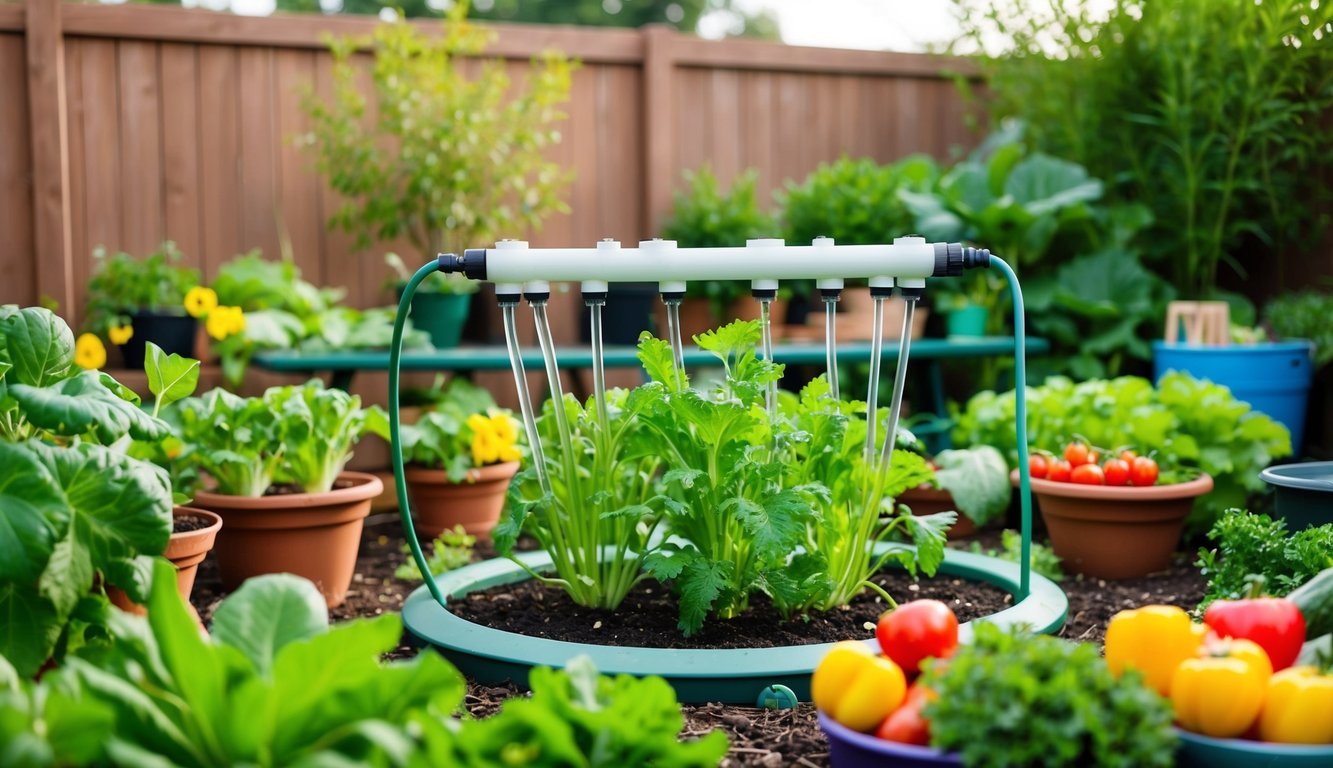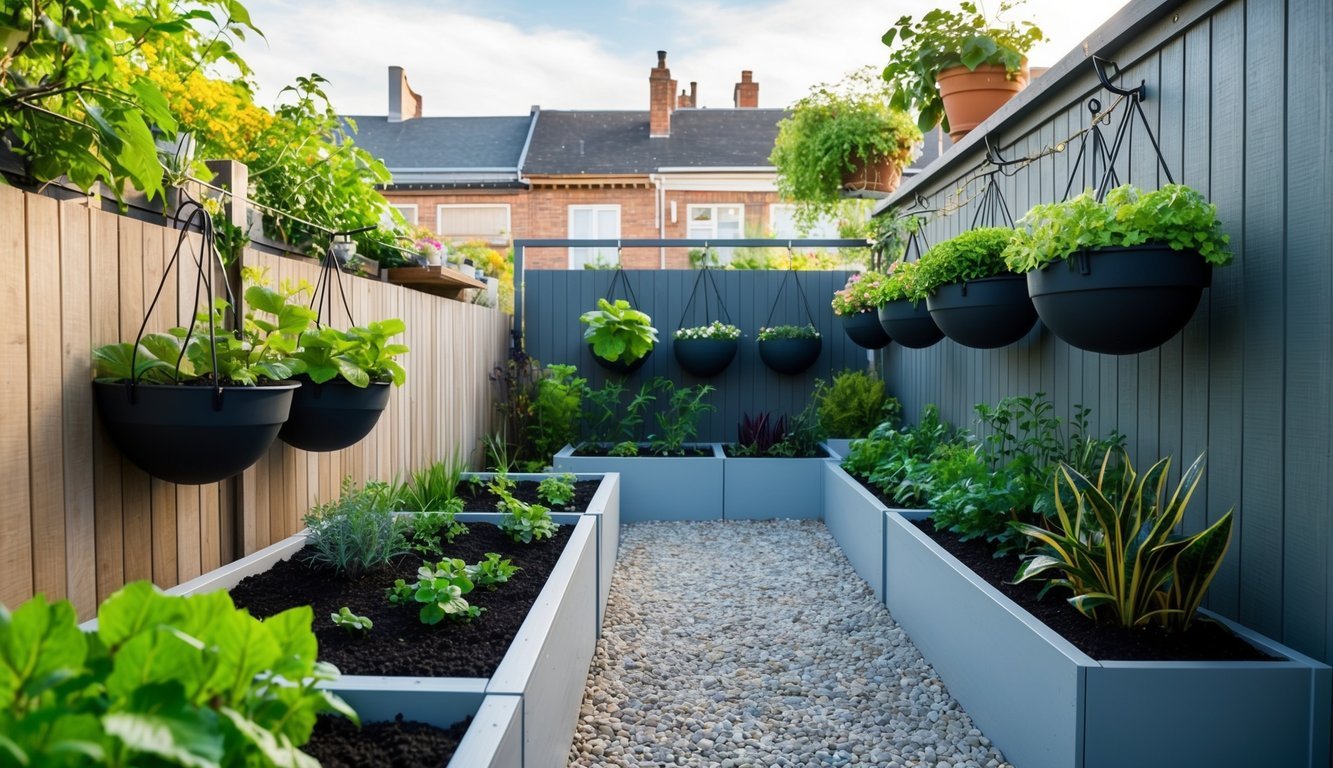As a suburban mom, I know how important it is to make the most of my outdoor space, especially when it comes to gardening.
Finding efficient and practical ways to enhance my backyard garden can turn my small yard into a productive oasis, making gardening enjoyable and manageable.
With a few clever hacks, I can easily elevate my gardening game, whether I’m growing vegetables for my family or creating a serene space for relaxation.

I’ve come across some fantastic tips that can help any busy mom make gardening less of a chore and more of a delightful activity.
From optimizing small spaces to improving soil quality, these hacks are all about smart solutions that fit into my lifestyle.
With a little creativity, my backyard can thrive and bring joy to my family.
Coffee Grounds for Acidic Soils
I love using coffee grounds in my garden, especially for plants that thrive in acidic soil.
Fresh coffee grounds are acidic, making them great for lowering the pH of more alkaline soils.
This can really benefit plants like blueberries and azaleas.
When I sprinkle used coffee grounds around these acid-loving plants, I know they get a little boost without adding too much acidity.
The caffeine left in the used grounds doesn’t harm my plants, so I feel good about using them.
I also like to mix the grounds into my compost.
As they break down, they help enrich the compost with nutrients.
It’s an easy way to recycle something I already have at home.
For a quick boost, I sometimes make a coffee ground “tea.” Just mix used grounds with water, let it steep, and then water my plants with the liquid.
This adds valuable nutrients directly to the soil.
2) Eggshells as Natural Pest Deterrent

I’ve found a simple way to keep pests away in my garden: eggshells.
When crushed and scattered around plants, they create a barrier that deters soft-bodied insects like slugs and snails.
Those little critters don’t like the sharp edges.
To prepare the eggshells, I make sure to clean and dry them first.
Baking them for about 10 minutes at a low temperature not only dries them out but also helps eliminate any bacteria.
Once cool, I crush them into small pieces.
Adding these crushed shells directly to the soil or mixing them into the compost can also enrich the garden.
The calcium they provide is beneficial for plant health, promoting strong growth.
Over time, I’ve seen a noticeable difference in pest activity.
It’s an eco-friendly strategy that makes use of kitchen scraps while keeping my plants safe.
Plus, it feels good to be resourceful and reduce waste!
Epsom Salt for Lush Foliage

I’ve found Epsom salt to be a game changer for my garden.
This simple ingredient provides magnesium and sulfur, essential nutrients that help plants thrive.
To get started, I mix one to two tablespoons of Epsom salt in a gallon of water.
This diluted solution is perfect for watering my plants or even spraying on the leaves.
When I’m transplanting, I use Epsom salt to reduce shock.
Mixing a tablespoon of it with water before I move the plants helps their roots settle in better.
I also love using Epsom salt to boost foliage.
The magnesium it contains enhances chlorophyll production, which leads to greener, fuller leaves.
Just a little care goes a long way in making my garden lush and vibrant.
4) Apple Cider Vinegar Fertilizer
I’ve found that apple cider vinegar can be a great addition to my garden routine.
It helps to adjust soil pH, making it more suitable for many plants.
To use it as a fertilizer, I mix one cup of apple cider vinegar with a gallon of water.
This solution is safe for most plants and promotes healthy growth.
I like to apply this mixture directly to the soil around my plants.
It not only nourishes them but also encourages beneficial microbial activity in the soil.
Using apple cider vinegar can also help combat pests.
The slight acidity can deter unwanted insects without harming my plants.
Regular application every few weeks keeps my garden thriving without resorting to chemical fertilizers.
It’s a simple and effective hack for any suburban mom looking to enhance her garden.
DIY Compost Bin from Pallets
Building a compost bin from pallets is one of my favorite backyard hacks.
It’s simple, cost-effective, and perfect for recycling old pallets.
First, I gather about five to nine pallets.
The number depends on whether I want a two-section or three-section bin.
A two-section bin usually needs just five pallets, while a three-section design is better with about eleven.
Next, I find a level spot in my yard.
My garden can get messy, so I like to pick a convenient location.
I start by attaching two pallets together at a right angle using zip ties or synthetic twine for stability.
Then, I add a third pallet for the back.
I secure everything with nails or screws to ensure it holds up through all weather.
For added ease, I often leave one side open for easy access when adding kitchen scraps or turning the compost.
This setup allows me to create rich compost for my garden.
Plus, it keeps my backyard organized and eco-friendly.
It’s an enjoyable project that enhances my gardening experience!
6) Banana Peel Fertilizer
I’ve discovered that banana peels can be a fantastic addition to my gardening routine.
They are rich in potassium, which is vital for plant health.
Using them helps with water uptake and photosynthesis.
To make banana peel fertilizer, I simply place a few peels in a jar filled with water.
I let this mixture steep for about a week to extract the nutrients.
After that, I strain out the solids.
Diluting the banana peel water is essential.
I use a ratio of 1:5, mixing one part banana water with five parts regular water.
This way, it’s safe to use on my plants.
I’ve noticed that my tomatoes and peppers really thrive with this natural boost.
Plus, it’s a simple way to recycle kitchen waste while giving my plants some extra love.
7) Rainwater Collecting Barrels

Rainwater collecting barrels have become my go-to for sustainable gardening.
They’re simple to set up and can make a real difference in managing water usage.
I usually place the barrel directly under a downspout.
This way, it easily catches rainwater from the roof.
It’s best to select a flat and even spot to avoid any tipping.
I found that adding an overflow hole is beneficial.
This helps prevent the barrel from overflowing during heavy rain.
Plus, using a lid with landscape fabric keeps out debris and bugs.
Using this collected rainwater helps me reduce my water bill while being eco-friendly.
It’s perfect for watering my plants or filling up my compost bin.
Creating my own rain barrel was a fun DIY project.
With just a few materials, I had an efficient system that fits my sustainable lifestyle.
Collecting rainwater isn’t just practical—it’s rewarding, too!
8) Vinegar Weed Killer

I often use vinegar as a natural way to tackle weeds in my backyard.
It’s simple and effective.
All I need is white vinegar, dish soap, and sometimes salt.
To create my weed killer, I mix one gallon of vinegar with a tablespoon of dish soap.
For a bit more power, I add a cup of salt.
I combine everything in a spray bottle.
When I’m ready to spray, I make sure the weather is dry and sunny.
This helps the solution work best.
I soak the weeds thoroughly, ensuring they’re wet enough to absorb the solution.
I find that this method is great for controlling weeds, but I may need to reapply it.
The vinegar generally kills the leaves, but sometimes the roots survive.
Regular application keeps my garden looking neat and tidy without using harsh chemicals.
9) DIY Drip Irrigation System

I love having a lush garden but keeping it watered can be a hassle.
A DIY drip irrigation system is a game changer.
It’s easy to set up and saves time.
First, I lay out drip irrigation tubing along the garden beds.
This tubing makes sure water reaches all my plants, and it’s easy to adjust as needed.
Next, I connect the drip line to a water source.
I use a garden hose to ensure a secure, leak-free connection.
It’s essential to make sure everything is tight to prevent any unwanted drips.
Installing a pressure regulator is also key.
It controls the water pressure flowing through the system, ensuring my plants get just the right amount of water.
For those on a budget, using items like old milk jugs can be a simple solution.
I simply rinse them out, drill some holes, and bury them next to my plants.
This setup allows for slow watering and reduces waste.
Creating my own drip system has made a big difference in my gardening routine.
It’s efficient and gives me peace of mind knowing my plants are well taken care of.
10) Soap Spray for Aphids

Aphids can quickly become a nuisance in my garden.
Luckily, using soap spray is an easy and effective way to tackle them.
It’s simple to make and safe for my plants.
To create the spray, I mix 5-6 tablespoons of liquid soap per gallon of water in a spray bottle.
It’s best to use warm water to help the soap dissolve better.
I usually stick to simple dish soap or castile soap.
When I’m ready to spray, I give the bottle a good shake to mix everything thoroughly.
I target the affected plants, making sure to cover the undersides of leaves where aphids often hide.
For light infestations, I apply the spray once a week.
For heavier problems, I might spray every few days.
This method not only helps eliminate aphids but is also eco-friendly, which is important to me.
Using a soap spray is a quick hack that keeps my garden thriving without harsh chemicals.
Understanding Your Soil Type

To create a thriving garden, I first need to know what type of soil I’m working with.
Understanding soil composition helps me select the right plants and improve my garden’s overall health.
Identifying Soil Composition
The first step is identifying my soil type.
I can do this through a simple jar test.
Here’s how:
- Collect a Sample: Dig about 2-3 inches down from my garden bed.
- Fill a Jar: Add the soil to a clear jar and fill it with water.
- Shake and Settle: Shake well, then let it sit for a few hours.
After some time, I’ll notice layers forming in the jar.
- Sand settles at the bottom.
- Silt floats in the middle.
- Clay sits on top.
This tells me if I have sandy, clay, or loamy soil.
Each type has unique characteristics, affecting drainage, nutrient retention, and plant choices.
Improving Soil Quality
Once I know my soil type, I can take steps to improve its quality.
For sandy soil, I mix in compost and manure for better moisture retention.
For clay soil, adding grit, peat moss, or compost can help aerate and improve drainage.
Here’s a quick list of amendments to consider:
- Compost: Enhances nutrients in all soil types.
- Manure: Adds fertility, especially in sandy soils.
- Peat Moss: Helps retain moisture in sandy and clay soils.
Regularly testing my soil pH is also crucial.
Ideally, I want it between 6.0 and 7.0 for most plants.
With these strategies, I can create a healthy, productive backyard garden.
Planting Strategies for Small Spaces

Maximizing a small garden can be a fun challenge.
I’ve found that using specific planting strategies can really make a difference, especially when space is limited.
Here are two key techniques that I’ve successfully used.
Vertical Gardening Tips
Vertical gardening is a game-changer for small spaces.
By growing plants upward instead of out, I can save ground space while creating a stunning visual effect.
-
Trellises: I often use trellises for climbing plants like cucumbers, peas, and beans. Not only does this keep my garden organized, but it also enhances air circulation.
-
Wall Planters: Utilizing wall planters is another great option. These pockets can be filled with herbs or smaller flowering plants, and they add a splash of color to fences or walls.
-
Hanging Baskets: I love hanging baskets for strawberries or trailing flowers. They not only optimize space but also make harvesting easier and more enjoyable.
Companion Planting Basics
Companion planting is not just practical; it’s also a way to enhance biodiversity in my garden.
By pairing certain plants, I can maximize growth and deter pests effectively.
-
Nasturtiums and Beans: I often plant nasturtiums with pole beans. The nasturtiums attract pollinators while helping to divert pests like aphids.
-
Tomatoes and Basil: This classic pairing helps improve flavors and deter pests. Basil can even repel harmful insects that might target tomatoes.
-
Spacing Considerations: I pay attention to spacing when planting. Densely planted areas can help shade out weeds, reducing maintenance time.
These strategies not only help to manage space efficiently but also foster a healthier garden ecosystem.

